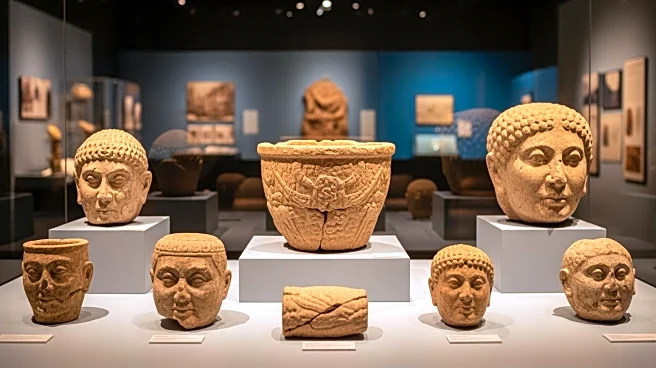What's Happening?
A new database has revealed that the Roman Empire's road network was nearly double the previously estimated length. Researchers, including Tom Brughmans, Pau de Soto, and Adam Pažout, published their findings
in Scientific Data, showing almost 300,000 km of roads, including main and secondary routes. The Itiner-e project mapped these roads using historical data, archaeological reports, and satellite imagery. Despite the extensive mapping, only 2.737 percent of the roads are known with certainty, with many routes hypothesized based on historical settlements.
Why It's Important?
The discovery of a more extensive Roman road network highlights the empire's advanced infrastructure, which facilitated efficient transport and communication across vast territories. This finding could reshape historical understanding of Roman logistics and influence modern infrastructure studies. The research underscores the importance of transportation in the empire's expansion and governance, offering insights into ancient engineering and planning that could inform contemporary practices.
What's Next?
Further research is needed to explore the Roman road system's changes over time and its impact on the empire's development. Archaeologists may continue to uncover new road segments, refining the map and enhancing historical knowledge. The Itiner-e project could expand to include more detailed studies of specific regions, potentially revealing additional routes and settlements. This ongoing research may lead to collaborations with historians and engineers to apply ancient insights to modern infrastructure challenges.











